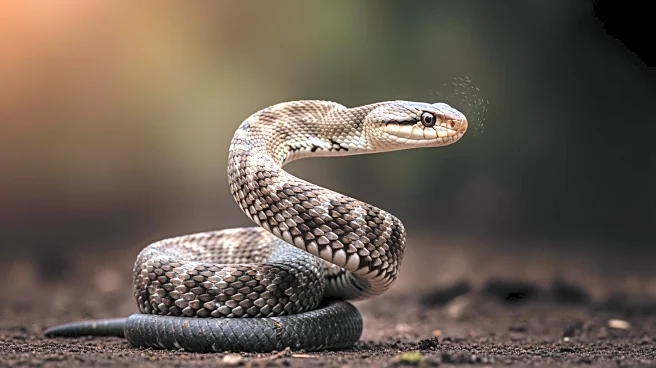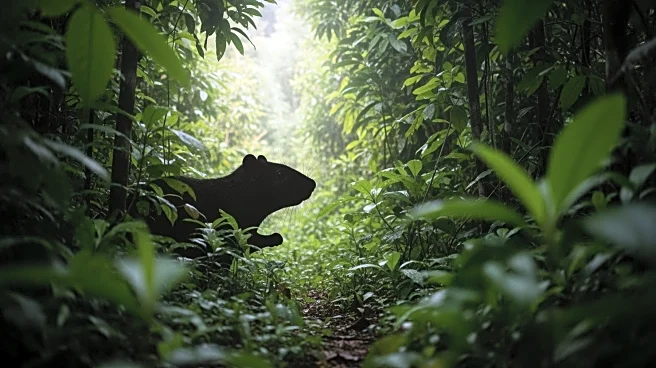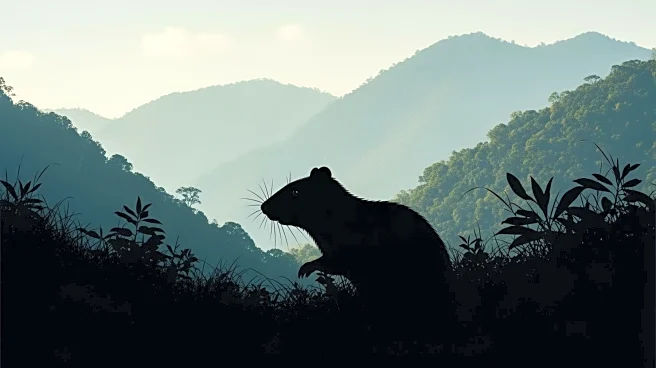What's Happening?
Czech researcher František Vejmělka has confirmed the existence of the giant woolly rat, Mallmys istapantap, in New Guinea, a species that had been in scientific limbo for decades. The rat was initially registered in 1989 based on archival data and skull
collections, but no photographic evidence existed until now. Vejmělka's discovery was made possible through collaboration with indigenous hunters in the rainforests of Mount Wilhelm, a remote area with challenging terrain. The woolly rat, known locally as mosak or 'man-biter,' is nearly 3 feet long and weighs about 5 pounds. It is nocturnal, climbing trees to feed on plants. The research also documented 61 species of non-flying mammals native to the region.
Why It's Important?
The rediscovery of the giant woolly rat highlights the importance of field expeditions in understanding biodiversity, particularly in remote tropical regions. This finding challenges previous assumptions about the rarity of the species, suggesting that its perceived scarcity is due to the remoteness of its habitat rather than actual population numbers. The study underscores the need for continued exploration and collaboration with local communities to uncover and document species that may be unknown or poorly understood. This has implications for conservation efforts and the scientific understanding of biodiversity in tropical ecosystems.
What's Next?
The discovery may prompt further research into the biodiversity of tropical mountains, potentially leading to new findings about other elusive species. Conservationists and researchers might increase efforts to explore and protect these remote habitats, ensuring that indigenous knowledge is integrated into scientific studies. The collaboration model used by Vejmělka could serve as a blueprint for future expeditions, emphasizing the importance of local partnerships in scientific research.
Beyond the Headlines
The rediscovery of the woolly rat raises questions about the accuracy of museum collections and the assumptions made about species rarity. It suggests that many species may be more common than previously thought, hidden in remote areas that are difficult to access. This could lead to a reevaluation of conservation priorities and strategies, focusing on unexplored regions and the integration of indigenous knowledge in scientific research.














